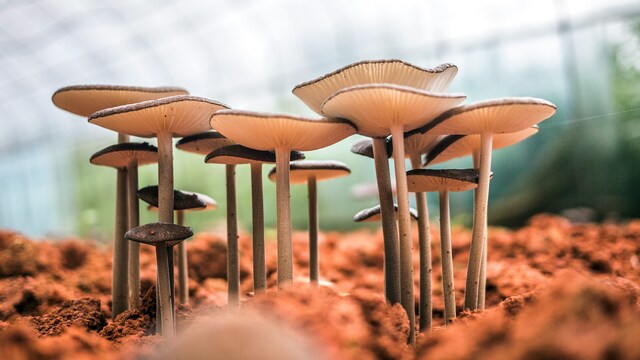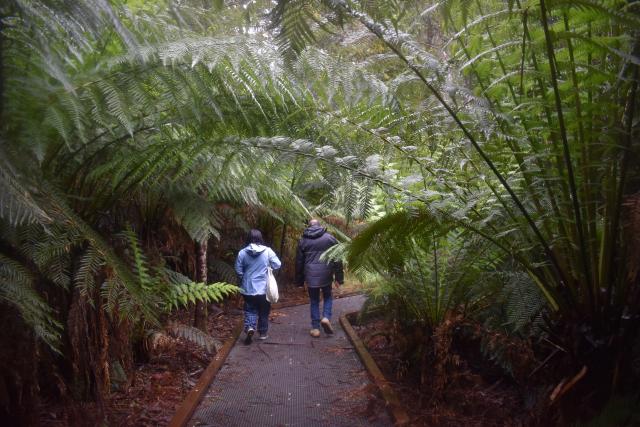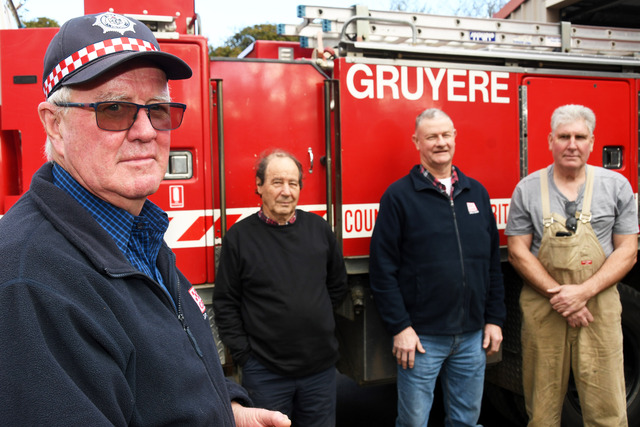Any day now, with warm autumn weather and hopefully some seasonal rains on the way, you may start coming across mushrooms, suddenly appearing unannounced on your lawns and in gardens, and further afield on sides of country roads, in pine plantations, native forests and even in city parks.
Sylvia Plath in her poem Mushrooms describes their ability to quietly, imperceptibly and with stealth and determination push their way through damp earth and debris to being seen and noticed: Creeping from the soil’s darkness, ‘ephemeral and misunderstood’, pushing their way through until finally,’ our kind multiplies, We shall by morning, Inherit the earth, Our foot’s in the door’.
Here Sylvia Plath is using an extended metaphor with the mushrooms representing oppressed women who she sees as possessing the same qualities to push their way into being seen and noticed. Maybe it’s not just women she’s thinking about but all those who are ignored and oppressed.
Mushrooms are not plants, so cannot be classified as fruits or vegetables, they are fungi.
Some are totally safe and edible but there are some that need to be treated with caution and others avoided.
Ancient literature, myths and folklore frequently refer to sacred mushrooms that were revered, feared and even worshipped in earlier cultures. To the Egyptians mushrooms were the ‘food of the gods’ and eating them would lead to longevity, even immortality.
The Mayans and Aztecs all consumed hallucinogenic mushrooms.
In Shakespeare’s time, fungi were viewed with suspicion.
This then is the time of the year when you can often spot groups of people foraging in parks or on the sides of roads. Mostly they are from ethnic backgrounds where mushroom foraging has been part of their culture for a very long time. It has seen them through hard times of wars and famine when little other food was available.
And the tradition has lasted.
In Slav countries like Russia and in Scandinavia the tradition persists as a favourite outdoor pastime and has become an almost meditative experience of communing with nature and at the same time receiving freely its bounty.
The cuisines of these countries reflect this.
Russian cuisine abounds with mushroom recipes: drying, pickling, pies, dumplings, soups beef stroganoff.
In Australia there are about 5000 species of fungi some of which Indigenous Australians have long eaten, but out of the ten wild edible fungi most have been introduced, mostly brought in unintentionally with plants such as pine trees.
The easiest edible species for novices to master in Australia: Saffron Milkcap, Slippery Jack (Suillus luteus), and Weeping Bolete (S. granulatus) grow predominantly with the roots of Pinus radiata, so foraging around pine plantations is fairly common.
But some mushrooms in Australia are poisonous or deadly, and a lot of them closely resemble some of the edible ones so getting familiar with which mushrooms are safe to eat and which are not is essential.
For example: the frequently foraged field mushroom (Agaricus campestris) bears a striking resemblance to some look alike that is not edible.
The most lethal of them all – the Death Cap (Amanita phalloides) was accidentally introduced to Australia from the Northern Hemisphere and is responsible for most fatalities from mushroom ingestion in Australia and worldwide.
Then there is the Fly Agaric straight out of a fairy story book, best captured by Lewis Carroll in Alice in Wonderland and known for its hallucigenic properties.
Today for many people the thought of foraging for mushrooms is still filled with foreboding.
In Australia, supermarkets and greengrocers are the most likely place we head to.
And the recent case of the alleged poisoning by Leongatha mother, Erin Patterson, of her in – laws has unnerved people in eating mushrooms whose source has not been certified.
Nevertheless mushrooms and foraging are growing in popularity in Australia.
Perhaps the influence of the many other cultures present or the recognition of their nutritional value: as mushrooms contain protein, vitamins, minerals, and antioxidants and are a good source of dietary fibre.
These all have various health benefits.
For vegans in search of that umami taste, present in meat products, mushrooms provide a substitute.
For those wanting to take up this pastime of foraging for wild mushrooms there are some steps to first take.
Know your mushrooms: familiarize yourself with the edible and toxic mushroom species that are commonly found in the regions where you plan to forage. There are many guidebooks, online resources, and local mycological societies that can help you with identification.
Make sure you are not trespassing and come equipped with a knife to cleanly cut the stem.
In his poem The Mushroom Man, Kevin Brophy takes us back to a time when we trusted someone selling us foraged produce. It used to be quite common on a Sunday drive to stop at a farm stall or see someone like the man in the poem.
He had come out of the forest with cartloads of mushrooms to sell to buy food and new clothing for his children and some wine for himself.
There are no questions about safety.
There is trust in this man’s knowledge about mushrooms.
Today, would you trust someone like the man in the poem enough to buy his produce?
In the poem there are vivid descriptions of the harvested mushrooms, ‘some a dark spilled-blood colour/ their stumps like goitered necks’.
For the man these yellow wood dwellers will put food on the table for his children.
It seems that this may not be an Australian setting as the final lines of the poem suggest that the forest where he has picked the mushrooms holds ‘memories of the last great war’ fought tree by tree through their forest’ but the mushrooms’ those old bent warriors, will always march out’.
Perhaps, this year with the cost of living biting, many more of us will think of foraging for mushrooms, but armed with knowledge and exercising caution.
Wild Mushrooming: A Guide for Foragers, CSIRO Publishing “Wild mushrooming: a guide for foragers” by Alison Pouliot and Tom May
MUSHROOM MAN by Kevin Brophy
in from the forest
with cartloads of mushrooms,
some a dark spilled-blood colour,
their stumps like goitred necks,
soil still peppered at their ends,
has the piled wild things around him
displayed to make the money
that will buy the milk, potatoes, wine,
and maybe new clothes for his children
—money that keeps him going out
for the mushrooms that creep across
the shivering toes of old trees
that reach and reach for sunlight.
Standing beside those heaps he takes handfuls
of coins from anyone in exchange
for these yellowy wood-dwellers
twisted and pulled out of their night-lives,
tossed here still heart-wild
on promises to fill our dark mouths
with their strange flesh.
The mushroom man’s happy at home,
I guess, his children crawling over him,
hands warm on them, knowing the mushrooms,
those old bent warriors, will always march out
at dawn to bang one another on the shoulders
and murmur together memories of the last great war
fought tree by tree through their forest.
Kevin Brophy is the Emeritus Professor of Creative Writing at Melbourne University, author of poetry, fiction and essays







